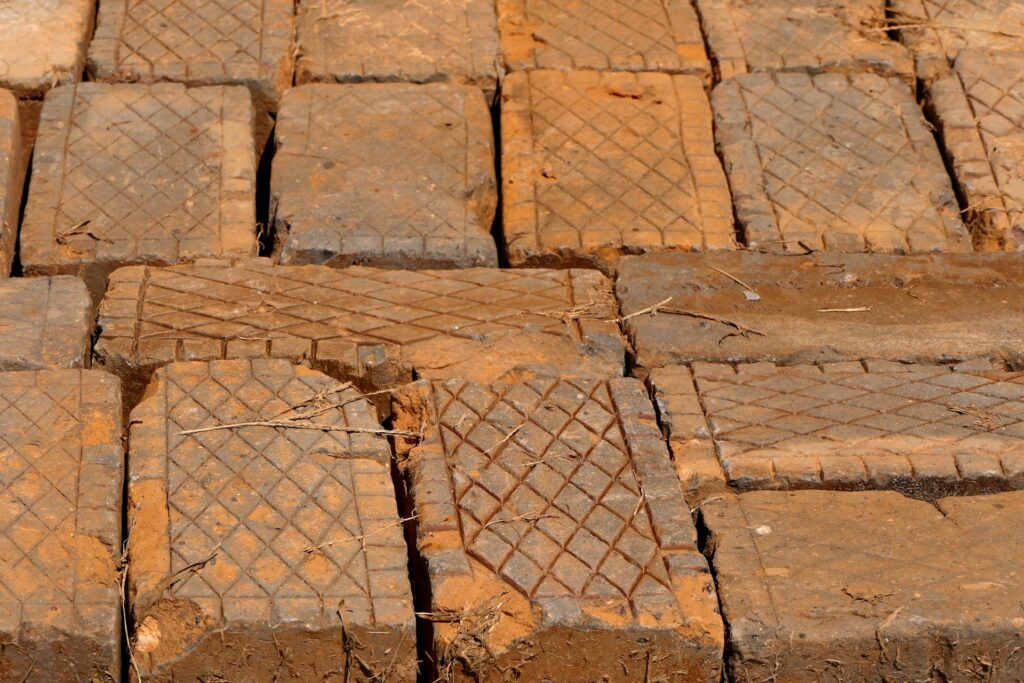Clay Bricks vs Fly Ash Bricks: Which is Greener?
When it comes to developing sustainable construction materials, two materials that have made their way to the forefront of assessment i.e. clay bricks vs. fly ash bricks.
The two materials have been commonly used types of construction materials, even though their effect on the environment varies greatly.
This blog is a breakdown of each type of material, its making process and which one is better for the environment.
Understanding the Composition and Manufacturing Processes
Clay Bricks
Clay bricks have been among the earliest construction materials necessary for building constructions where clay is mold into rectangular shapes and then baked in a kiln.
The principal material that is used as raw material in the production of intends is clay and this is got from fertile topsoil hence triggering the degradation of arable land.
The production involves utilization of high temperature kilns which are major sources of fossil fuels and hence, emission of carbon.
Fly Ash Bricks
Fly ash bricks, however, are comparatively recent development, and these bricks are made from fly ash, cement, lime, and gypsum.
These bricks are normally produced by forming to hydraulic press rather than by burning to fire kilns as usual.
Thus, such a process not only reduces landfill waste, but it also lowers the market demand for virgin materials which are used in manufacturing the same products.
Also, fly ash bricks are hardened in steam enclosure which requires less energy than the conventional clay brick kiln.
Environmental Impact Analysis
Raw Material Sourcing
Notes that the making of clay bricks involved the digging of topsoil which is inputs that are non-renewable input important in making of fertilizers for enhancing agricultural production.
This advances to soil erosion and loss of fertile soils and soil nutrients.
On the other hand, there remains the use of fly ash bricks that incorporate a waste by-product into the mix.
The brick industry’s use of fly ash contributes a great deal in the reduction of industrial waste disposal to landfills.
Energy Consumption
Clay brick production is chiefly energy-progressive and utilizes coal or wood for firing the kiln or oven. It also results to deforestation and Greenhouse gas emissions.
Fly ash bricks, in contrast utilize a cold press technique that utilizes even less energy than the firing process of clay bricks.
Also, curing through steam chambers even lowers the energy requirements which makes fly ash bricks more energy efficient.
Carbon Footprint
The findings were that carbon footprint of the clay bricks is much higher than that of the sand bricks when all the three factors – topsoil depletion, fuel consumed and emissions from kiln firing are taken into consideration.
Fly ash bricks in the other hand are more environmentally friendly since they are made of industrial waste and take less energy to produce.
In addition, fly ash can significantly improve the condition of the environment because using it helps to avoid generating waste and releasing toxic ash particles into the air, characteristic of coal-fired power stations.
Durability and Cost Considerations
Durability
Fly ash bricks are comparatively denser than clay bricks and the surface finish of the fly ash building bricks is better than that of clay bricks these bricks absorb less water than clay bricks.
It also minimizes the incidences of water seepages and enhances the durability of constructions developed using the fly ash bricks.
Also, they possess superior compressive strength to permit their use in many construction operations.
Cost
Through the required intensive manual operations and kiln firing process clay bricks are usually more costly than those of fly ash bricks.
Fly ash bricks on the other hand involve less manufacturing cost because of the simple procedure of prepare the bricks and the material which is used, fly ash is easily available and is cheaper by-product of thermal power plant.

Challenges and Limitations of Fly Ash Bricks
Despite the loads of advantages associated with the use of fly ash bricks, the products are not without their pull.
The production and supply of quality fly ash depends on access to coal fired power plants which might place serious constraints on the geographical expansion of these products.
Also, fly ash used in the construction industry and generated from low quality coals is a concern in terms of environmental safety since it is believed to leach out heavy metals when used in construction projects.
Improper handling and quality control during the production process of the fly ash bricks are answers to all these challenges ensuring high quality yields maximum potential of the material.
Conclusion: The Greener Choice
If the environmental impact is considered, fly ash bricks come out as more beneficial.
They are more sustainable than the normal clay bricks because they utilize the industrial waste, they take less energy and emit less carbon.
Additionally, they are relatively long lasting thus require less frequent replacement and relatively cheaper to modify.
However, it should also focus on availability in the region, the modes of transport and certain construction necessities.
Clay bricks have served for many years and even now they are preferred as building materials but using fly ash bricks also can mean a lot for improving the environment of the construction industry and for the future.
Also read: How Sustainable Building Materials Save Money in the Long Run

